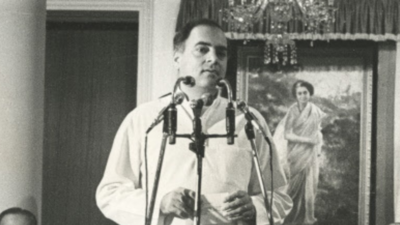We may receive a commission on purchases made from links. Confectioners have been innovating candies for millennia, and some candies have had a purpose beyond satisfying a sweet tooth. For instance, did you know that there's a connection between smokers and PEZ ? It was originally targeted toward individuals who wanted to quit smoking.
Then there are candy cigarettes, which were marketed toward children and may actually increase smoking. In the late 19th century, the first chocolates that Hershey Chocolate Company made were molded into cigarettes, cigars, and other shapes like chrysanthemums and bicycles, wrapped in colorful packaging and sold alongside each other to kids and adults. With demand growing by the 1920s, other companies made chalky white candy and bubble gum cigarettes that produced a little "smoke" from the candy dust when people blew on them.

The problem was that these candies were packaged in boxes designed to look like tobacco cigarettes. After a short feud over candy companies using tobacco companies' names and logos on the packaging, the two industries started working together. Kids became the target market with wording such as "Just Like Dad!" on the boxes and toy surprises inside.
The candy cigarettes were placed on low shelves in stores where children could easily see them. Some were even put in vending machines that resembled those for tobacco cigarettes. A study linked candy cigarettes to tobacco smoking By 1967, World Confections Inc.
— then World Candies Inc. — reported that kids aged 4 to 8 were its main consumers for candy cigarettes. This bubble burst soon after the dangers of tobacco products emerged.
While some adults might view cigarette sweets as one of the many foods and drinks that can help you quit smoking , studies show that it has the opposite effect on children. Multiple research assessments were conducted in the 1990s and into the early 2000s. In a paper published in Pediatrics in 1992, scientists suggested that the candies could play a role in kids developing an acceptable, favorable attitude toward tobacco smoking.
This was based on two study findings. The first was that children ages 4 through 11 were more likely to play with candy cigarettes than other snacks and refer to them as smoking toys. The second was that seventh-grade students were more likely to reference smoking behavior in a favorable light.
Then, a study published in the British Medical Journal in 2000 analyzed evidence that shows the smoke-like candies promote the tobacco habit. However, the most significant research linking candy cigarettes in childhood to tobacco smoking in adulthood wasn't published until 2007. The Preventative Medicine -published study involved a Harris Poll Online survey of more than 25,800 adults between November 2005 and May 2006.
Of the respondents, 26.4% were current smokers, and 29.4% were former smokers.
Among this group, 88% had eaten candy cigarettes before, demonstrating that using candy cigarettes likely increased the odds of tobacco smoking. Candy cigarettes are still available today Moves were made to ban the candy cigarette look-alikes over the decades after the dangers of tobacco first came to light, but they were unsuccessful in the United States. Unlike the discontinued gummy candy that infuriated the SPCA — the Trolli road kill gummy candy — candy cigarettes are one of the many iconic candies of the past you won't believe still exist in the United States.
The sweets underwent a name change to candy sticks or "stix" sometime between 1990 and 2000. The slight name change followed an unpublished study from 1991 that found 5.3% of smokers believed candy cigarettes affected their choice to smoke tobacco.
The main risk for kids was the design, size, and shape of the candy packaging because of how similar these features are to the packaging for tobacco cigarettes. There was little difference to children whether or not the word "cigarette" appeared on the cartons. As a result, lead author, psychologist Dr.
Howard Kassinove of Hofstra University, and his team suggested that companies change the packaging design to something appealing to kids and unrelated to tobacco cigarettes. Despite the recommendation, the companies retained the design and only removed the cigarette wording. World Confections Inc.
continues to manufacture these flagship candies as World Confections Classic Candy Sticks and World Confections Bubble Gum Classic Sticks . You can find World Confections Character-Licensed Candy Sticks in assorted colors and flavors, too..
Food

The Shady History Of Candy Cigarettes

While you may be surprised to learn that candy cigarettes are still available in the U.S., you might be equally surprised by their shady history.














